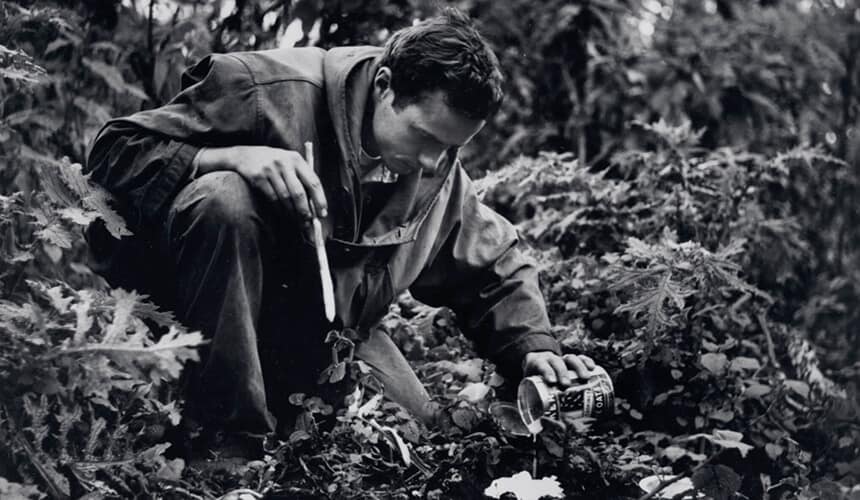George Schaller
Ecological Missionary
The world’s top field biologist has spent most of his life in the wild, studying and helping us all fall in love with animals that need protection.
George Schaller MS1957, PhD1962 has slept in damp rainforests, grassy plains, and cool mountains to better understand of the lions, tigers, and (panda) bears that live there.
He rediscovered several rare species once thought extinct: the saola in Laos, the Vietnamese warty pig, and the Tibetan red deer.
He’s written dozens of books and hundreds of articles, and in 1978, author Peter Matthiessen profiled him in The Snow Leopard. The award-winning book details their mountain trek to research the mating habits of Himalayan blue sheep. That’s also where Schaller spotted a rare snow leopard — a sight few Westerners had seen in the previous 30 years.
Large stretches of land from Polar regions to the Equator are now protected thanks in part to Schaller’s work, among them the 200,000-mile Chang Tang Nature Reserve in Tibet and the Arctic National Wildlife Refuge in Alaska.
The Arctic captivated Schaller during a summer expedition with mentor Olaus Murie shortly after Schaller graduated from the University of Alaska. Schaller, born in Berlin in 1933, Schaler emigrated to St. Louis after World War II, and he lived there until attending college.
From The Park
George Schaller was one of the 20th century’s most prominent field biologists. He studied great apes, snow leopards, and giant pandas. Conservation was his main objective. As a biologist, he believed “You have a moral obligation to protect that which you study.”
Source: Used by permission of copyright holder.
Murie’s 1956 Arctic expedition was the first to inventory untouched meadows and mountains populated by polar bears, wolves, and caribou.
Schaller’s professors recommended that he attend the University of Wisconsin for graduate school. In 1959, the 26-year-old scholar took a break to study mountain gorillas in Central Africa. His dissertation and a pair of books dramatically changed people’s minds about the peaceful and intelligent creatures, often mistakenly thought of as brutal and dangerous.
In the 1980s, Schaller became the first Westerner ever invited by China to study pandas in their native habitat. His Last Panda stirred global interest about the gentle giants, and eventually, the Chinese government created dozens of panda reserves and regulations against deforestation and hunting.
In the last decade, Schaller’s worked on a “Peace Park” in Pakistan, Afghanistan, Tajikistan, and China to protect the habitat of the Marco Polo Sheep that live in the mountainous border region and face danger from trophy hunters.
Schaller serves as senior conservationist with the Wildlife Conservation Society and vice president of Panthera Corporation.
 67° F
67° F